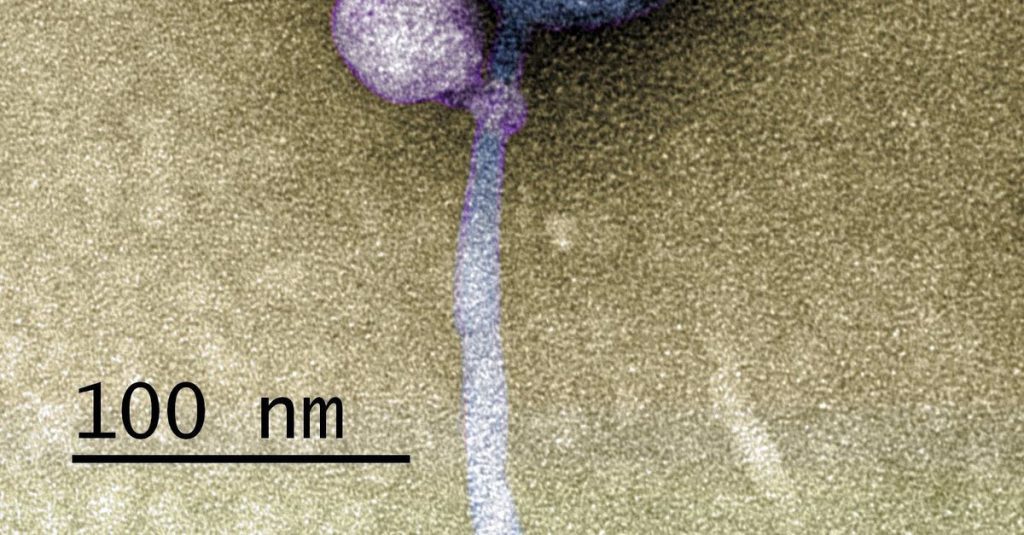This is the first ever image of a virus holding another virus in a stranglehold. Small ball is the aggressor here. Like a vampire, the larger virus, which consists of a “head” and a “tail,” is held firmly by the “neck.” Researchers from the University of Maryland (United States) saw this using an electron microscope. They described their discovery In the Journal of the International Society of Microbial Ecology.
Both viruses are called phages: viruses that infect bacteria. Bacteriophages are the most numerous viruses on Earth and play a major role in every conceivable ecosystem. They “hijack” the metabolism of their bacterial victim to reproduce their own. They insert their genetic material into their host’s DNA. This is then read and replicated by the host machinery, packaged into a protein coat, and released again after the host cell bursts. On to the next victim
Some phages get rid of them easily. They are known as satellites: they are small, incomplete viruses that cannot do much on their own. They lack many of the genes needed to hijack host DNA, build the protein envelope, or explode the host cell. For one or more of these functions, they depend on other bacterial phages, called helpers.
To achieve this, the satellite and helper must be in the same bacteria at the same time. But it’s still unclear how satellites can achieve their parasitism if they don’t even have the genes themselves to integrate into the host’s DNA, the first step in the whole process. The group in the picture shows the answer. The satellite attaches itself to its assistant. It makes sure they infect the bacteria together and get the DNA close together.
Researchers say it was an accidental discovery In a news report From their university. They isolated phages from soil bacteria (Streptococcus), and sent to another laboratory for genome analysis. “Your samples are contaminated,” the researchers were told. “We found DNA not from one bacteriophage, but from two.” Again, the phages were purified and sent back. But the exact same “contamination” showed up in the samples: a much smaller piece of DNA, which also looked like it belonged to a bacteriophage, but was incomplete.
The researchers enlisted the help of their colleagues using the transmission electron microscope: a tool ideally suited for viewing viruses. This is how they discovered the satellite’s vampire behavior. They suspect that many tandem systems exist in the world of phages.

“Coffee buff. Twitter fanatic. Tv practitioner. Social media advocate. Pop culture ninja.”











More Stories
Which can cause an increase in nitrogen.
The Central State Real Estate Agency has no additional space to accommodate Ukrainians.
The oystercatcher, the “unlucky national bird,” is increasingly breeding on rooftops.